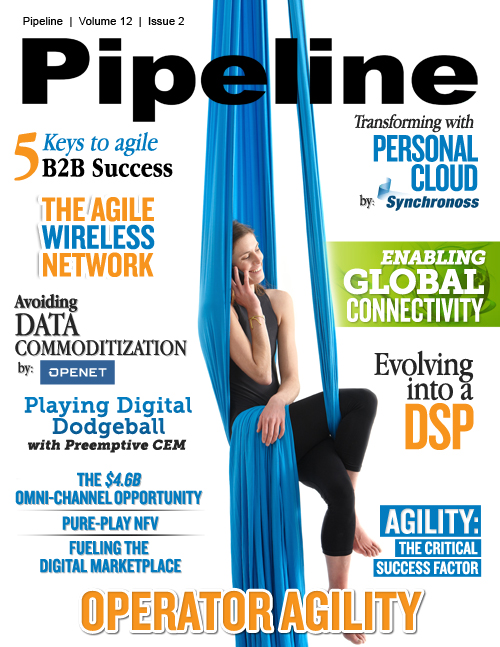Avoiding Data Commoditization: The Need for Smarter Customer Engagement
By: Martin Morgan

Are some mobile operators heading down the road of their businesses becoming commodities where the only real differentiator, in the eyes of the customers, is price? Voice and text services, for so long the mainstay of their business, are now commoditized and data could well be heading the same way. Competition from OTT players offering free voice and messaging services, the roll out of free Wi-Fi services and the emergence of Wi-Fi first MVNOs means that, despite the contraction in numbers of mobile service providers, the mobile market is at its most competitive since it emerged over 30 years ago.
In most markets mobile penetration has peaked and operators are pushing for existing customers to use more data and encourage data adoption. But in many cases large numbers of customers use Wi-Fi for data connectivity. They then use OTT apps to communicate. This disintermediates the mobile operator. The future for operators who pursue a traditional telecoms business model of only generating revenue from a monthly bundle of voice, text, and a volume of data may not be too bright. Not only could some operators be forced to play the role of dumb pipe, for an increasing number of pre-paid customers, the operator won’t even serve that role with data connectivity coming from free Wi-Fi.
Some operators will see their data services become commoditized. Adding more data to bundles and cutting cost is fine and it can be argued that for basic bundles this is inevitable. However, in order to compensate the revenue reduction from basic bundles, there must be sufficient and growing revenue streams from other sources. It is the ability to develop new revenue streams, outside basic bundles that is characterizing the next stage in mobile development. In order to advance to this next stage, operators have one, very large and important asset that can leveraged.
Customer Base – The Most Important Asset an Operator Has
Operators have many assets that they can leverage and build upon in order to grow new revenue streams. These include monetization systems and processes, service creation systems, as well as the network. It can be argued that the one main asset an operator has is its customer base. One important aspect is that the operators have a regular payment pattern with their customers. Post-paid customers get a bill every month. Most pre-paid customers top up their balance more frequently than this. The ability to build on this regular payment process is key to ensuring that new business opportunities are monetized.
With this basic foundation operators can start better engaging with their customers. However, engagement needs to be relevant and to be so it must be personalized and timely. By building on this engagement and becoming increasingly relevant to each customer, operators have the starting point on which to transform their business and not allow data to become a commodity.
Delivering Relevant and Personalized Customer Engagement: Four Key Pillars
Relevant and personalized customer engagement needs to be built on four key pillars. These are: Visibility and Intelligence, Interaction and Personalization, Service Development and Delivery, and Monetization.
1. Visibility and Intelligence
Business intelligence has two main components—historical intelligence and real-time intelligence. Historical intelligence is useful for building the profile of a customer. These profiles can include the following information on customers: what their favorite services are, what sites they visit, what their usage patterns are, what they spend, their lifetime value, their propensity to churn score, any recent calls to customer care, etc. This data is constantly updated and is normally stored in a data warehouse.
Then there is intelligence on what a customer is doing here and now. This is real-time data that an operator analyzes in real-time (streaming analytics). Operators already collect customer usage data in real-time (for charging purposes), and now they are looking to carry out streaming analytics on this data. They then combine this with historical data on the customer to know what offer/communication is most relevant to a particular customer. Examples of data collected from streaming analytics can include the following real-time data: location, number called, network experience (e.g. jitter, delay, etc.), and web sites being accessed. Add historical data on preferences, experience, NPS, value, and so on.
2. Interaction and Personalization
People hate getting spammed with irrelevant emails that clog up their inbox and waste their time. Conversely people actually like getting personalized, relevant offers. According to research by Teradata and Celebrus Research in 2015, 63% of consumers across every age group like to receive personalized offers. This finding is backed up by the Accenture Personalization Survey 2015, which found that nearly 60% of consumers want real-time promotions and offers.



















